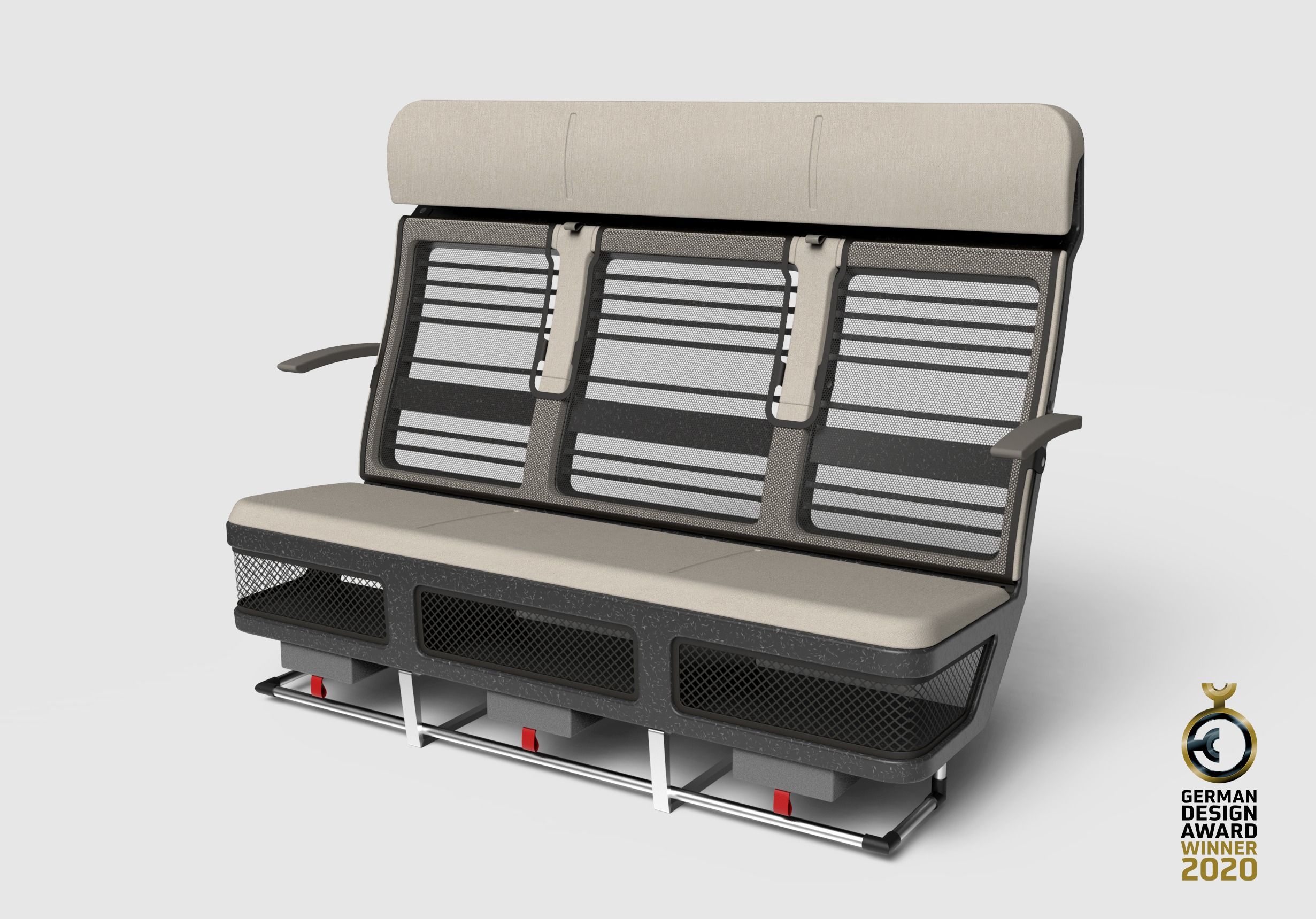Mormedi's insights from Tokyo Motor Show 2019
Nick Lendon
Lead Industrial Design

This year the Tokyo Motor Show was focused on the future of Mobility. In 2017, we saw some very futuristic concepts from companies such as Yamaha. However, this year manufacturers such as Hino, Honda, Nissan, Suzuki and Toyota seemed to be showing a consolidation of strategies.
The world’s leading car manufacturers showed what they believe will be the most passenger-centric, innovative, and eco-friendly alternatives to the way we move around cities and even across countries, and Mormedi was in attendance. Over the course of the 12-day tradeshow we saw everything from futuristic technologies to 70s-inspired autonomous vans or cargo vehicles.
Here are five of the biggest showstoppers and our take on some of the most popular automotive trends for this year:
Toyota Olympic-based E-Palette and new AV proposals
Japan’s top-selling auto company, Toyota, introduced the new version of its fleet-type autonomous and electric vehicle; the e-Palette. This new model will serve athletes during the upcoming 2020 Olympic and Paralympic Games.
The new e-Palette’s design was based on feedback from athletes and Paralympians. It will autonomously run a shuttle service around the athletes’ villages in order to transport competitors and staff around the area.
Some of the new features added to the e-Palette include:
- Larger doors
- Lower floors and electric ramps that allow passengers—particularly wheelchair users—to board easily and quickly
- Bigger space to fit up to 20 standing athletes or four wheelchairs and seven standing passengers
However, the e-Palette was not Toyota’s only AV offer. The Japanese car manufacturer introduced the LQ concept which is a level 4 autonomous vehicle. This means that the vehicle is capable of functioning without human supervision in specific locations or vehicle modes.
Toyota takes approaches future mobility by looking at the entire ecosystem which is, from our perspective, quite advanced when compared to some competitors.




Suzuki showed an AV concept for the first time
Suzuki followed the fully-autonomous trend for the first time and introduced the Suzuki Hanare Concept. This model was designed for large families that enjoy traveling in vans but do not want to lose the comfort and family space of their living-room. Some of the most ground-breaking features of the Hanare (Japanese for “detached cottage”) include:
- No driver’s seat
- An enormous screen in the center of the van that works as a control panel
- A symmetrical design with no front or rear as it won’t be necessary in a fully-autonomous future
- A large gull-wing door that spans from one end of the vehicle to the other in order to reveal a spacious interior with a living-room-like design




Honda fast-tracks its “electric-vision” with new sustainable strategy
Honda announced that its mainstream models will be electrified, not by 2025, but by 2022. “I’m delighted to announce that all of Honda’s mainstream models here in Europe will be electrified not by 2025, but three years earlier, by the end of 2022, just 36 months from now”, Tom Gardner, SVP Honda Motor Europe.
The company also revealed its new “e: Technology” branding, which will unify all of Honda’s electrified products under the same global name. The Honda Fit (aka Jazz overseas) will be the first vehicle to carry the “e:HEV” branding, standing for “Hybrid Electric Vehicle”.
The new, fourth iteration of the Honda Fit will come in five different trims including the Crosstar version which adds a crossover feel with 16-inch aluminum wheels. More of the features of the Honda Fit that were introduced last week in Tokyo include:
- Body-stabilizing seats
- On-board communications with Honda Connect system
- Low and flat instrument panel
- Wireless Apple CarPlay connectivity
- More cabin storage




Hino released its new platform concept for AV cargo vehicles
Hino’s theme during Tokyo’s Motor Show was “Transporting Every Happiness” where it unveiled the Hino FlatFormer, a versatile concept vehicle that will change the idea of cargo transportation forever, according to its creators.
The Flatformer has no driver’s cabin. It consists of an adaptable and fixed low-riding bed to which containers can be swapped out. Hino’s idea was to create a “standardized truck bed” that customers could customise according to the services that they offer.
Hino vision is also quite advanced in terms of their manufacturing outlook, the chassis being 3d printed.

Nissan presented its new EV vehicles
Nissan is probably one of the most advanced manufacturers in terms of EV & AV technology. They presented two new models – a sedan and an urban vehicle – and are clearly opening a new chapter in terms of future design language & design strategy.
Other trends and insights
Overall, auto makers are showing great interest in developing urban mobility alternatives for senior citizens, especially due to Asia’s rapidly-ageing population. Auto companies such as Toyota and Nissan are betting on smaller, two-passenger EVs that fit Japan’s cramped parking spaces and streets.
In addition, monospace and one-box vehicles were all over this year’s Tokyo Motor Show. From cargo to passenger transportation vehicles, car manufacturers are developing cube-shaped concepts in order to provide more interior space. Some examples are the new Mitsubishi Super Height K-Wagon concept, Suzuki’s Hustler, and Nissan’s NV350.


Aesthetic trends
Few concept cars have captured the imagination amongst both petrolheads and non-car buffs in recent years like Honda´s Urban EV concept that debuted in Germany in 2017. Fast forward two years to Tokyo and the production version (the Honda “E”) is edging closer to reality.
The journey from concept to market has seen some of the more outlandish features hit the cutting room floor, but what remains is still a well-proportioned, charming, retro-inspired city vehicle with some neat futuristic touches that is sure to make heads turn when it hits the roads later this year.
Japan does retro well, and Suzuki were another of the major manufacturers to present a concept that combines cutting edge internals with nostalgic styling. The Waku SPO is an homage to the 1960s “Fronte 360” and features a power-operated folding top and LEDs integrated into the wheels. It also has the ability to change its “face” at the flick of a switch. A clear reaction to the buzz that the Honda created, this somehow feels a little more cliched, and lacking in some of the sophistication of its rival.
When Japanese design isn’t looking to the past for inspiration, it is positioning itself way into the future. The Lexus LF30 does it very successfully, mixing organic surfaces with hard edges to great effect. Less successful in our opinion was the aforementioned Toyota LQ: a strange combination of styles that results in a confused exterior aesthetic. But the onus is very much on the interior, which is designed to “create an emotional bond” between man and machine.
And finally, there are the cars that don’t look like cars. As well as the Hanare mentioned above, Daihatsu`s Ico Ico takes “one-box” to the extreme, maximizing headroom for the “mobile living room” effect. However, the all-white interior makes for a very clinical, impersonal environment, relying instead on an anthropomorphized robot assistant named Nipote to add character. It is envisioned as a “first-mile” or “last-mile” form of transport that is more likely to be owned by a public authority than individuals.
It is clear that the emergence of fully autonomous vehicles is bringing with it a revolution in how the public see cars, and Japanese manufacturers are hedging their bets as to how to approach this new outlook. Whilst they seem to be braver than their global counterparts in terms of proposing radically-proportioned “living space” vehicles, their move toward retro as a trend suggests they are not entirely sure the buying public are ready to redefine the automobile just yet.





